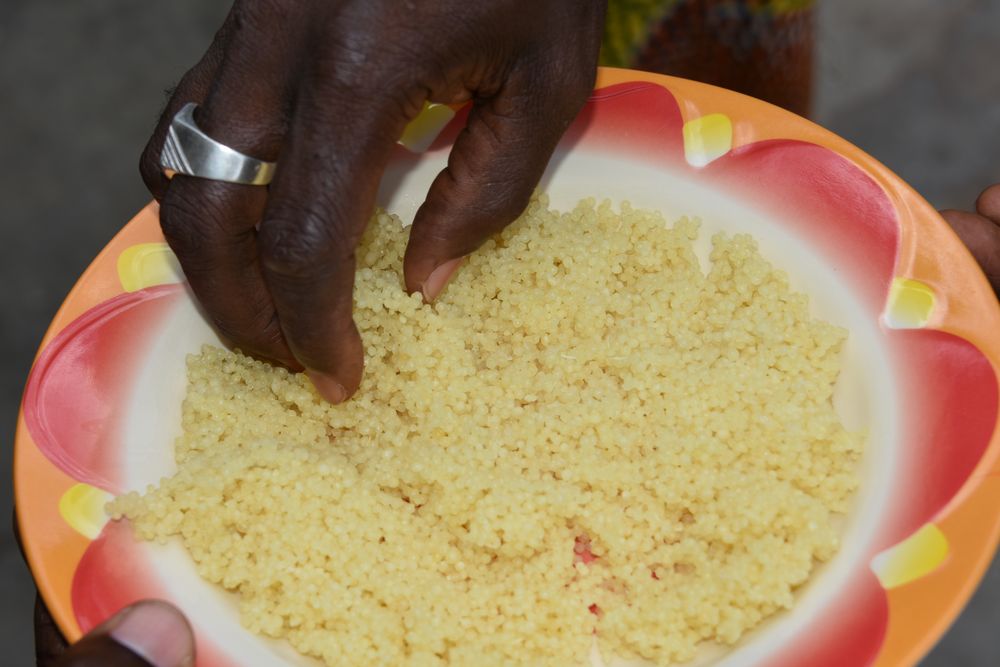Attiéké
Product Identity
Attiéké is a cassava couscous produced by steaming fermented cassava pulp semolina. It is a traditional calorie-dense food with a slightly sour taste and eaten with fish, meat and vegetables. Attiéké is native to and traditionally produced in southern Côte d’Ivoire by Adjoukrou, Ebrié and Avikam women. Its production has spread across the country all and it is now produced by women of many ethnic groups.
It takes three to five days to produce attiéké. First, a traditional inoculum is prepared by fermenting slightly boiled or braised cassava roots for one to three days. Then, fresh cassava roots are peeled, cut into pieces, washed and crushed along with 7-12% inoculum, with about 1% red palm oil and 5-10% water. The mash is left to ferment in bags for 12 to 15 hours. The watery fermented paste is wrung in a hand press and the pressed cake is sieved using a 5mm sieve. Granules are then formed by hand and slightly sun-dried in very thin layers for about 20 minutes during the dry season or one hour during the rainy season. Dried granules are winnowed to remove fibres and any extraneous matter. Depending on the type of attiéké, the semolina is cooked directly or sieved again with smaller mesh sieves ranging from 1 to 4mm. Attiéké is cooked by steaming it for 30-40 minutes. The end product is packed into small or large plastic bags or baskets, depending on its final use.
Attiéké is mainly eaten in the towns and villages of Côte d’Ivoire, where it has become one of the main staple foods. However, attiéké’s popularity has spread and nowadays it is eaten in many West African countries, and in Europe and America by non-natives (African diaspora). To meet this demand, attiéké is exported as a frozen or dried product. Although attiéké is native to Côte d’Ivoire’s coast, countries such as China are showing a big interest in its production and export.

